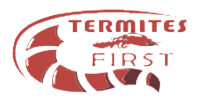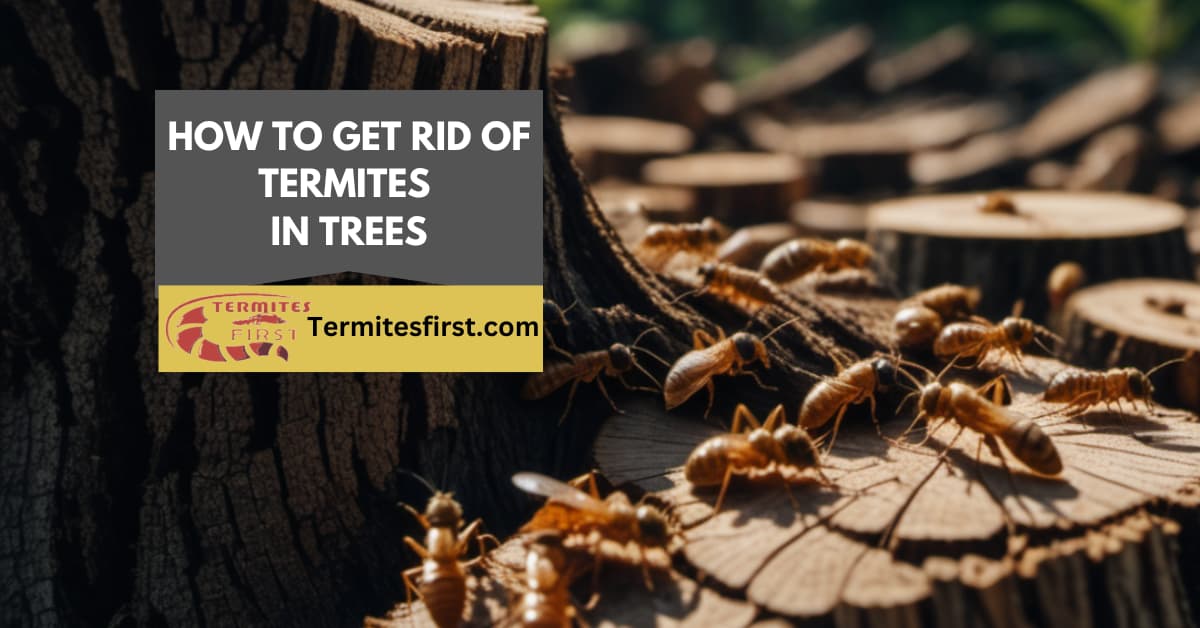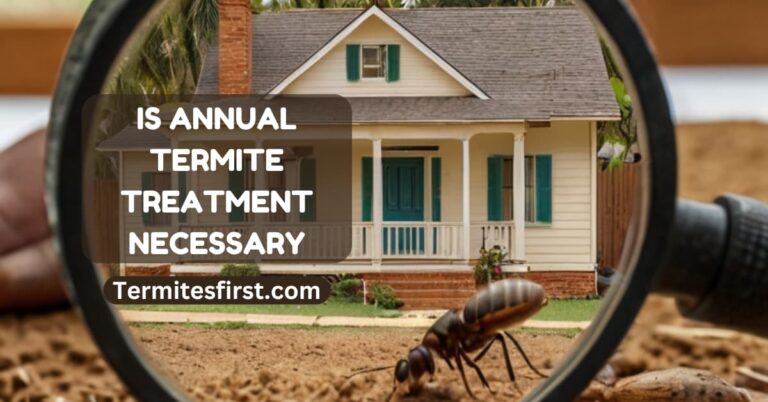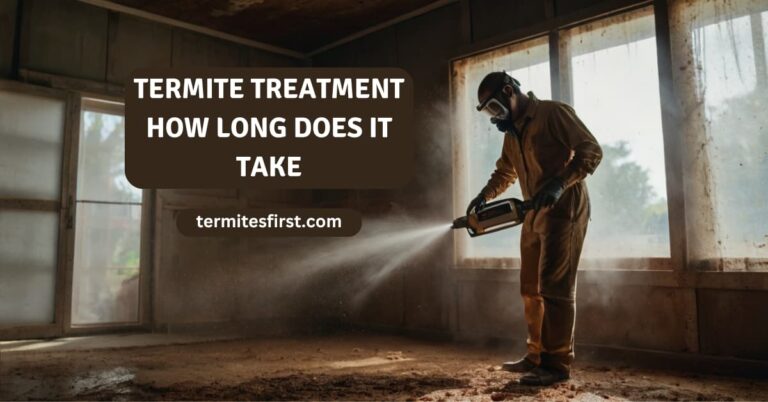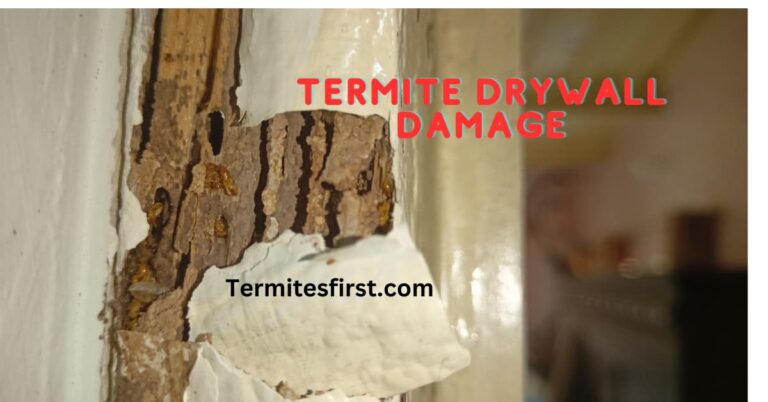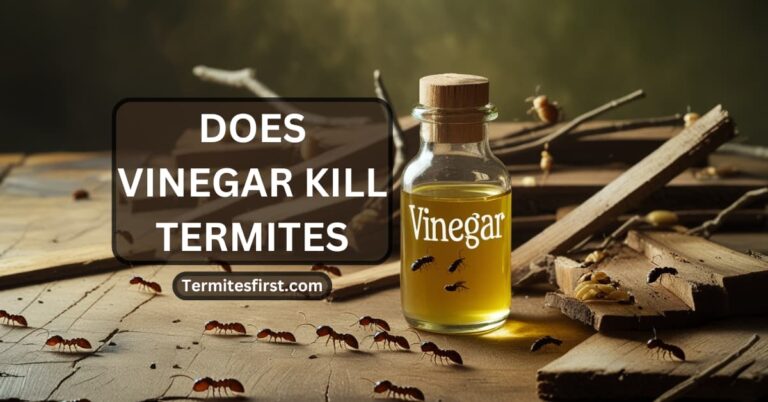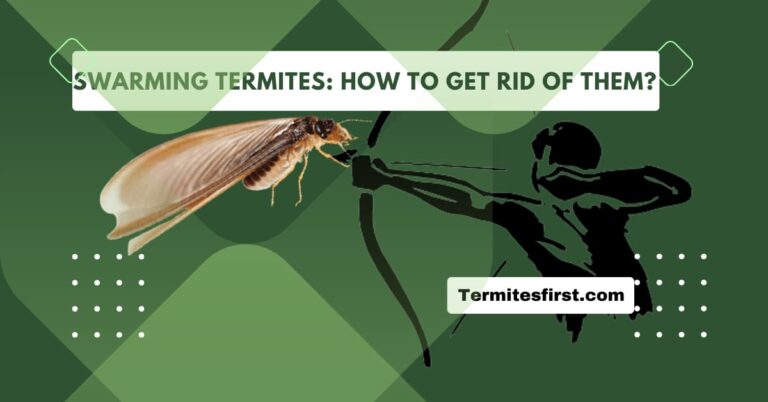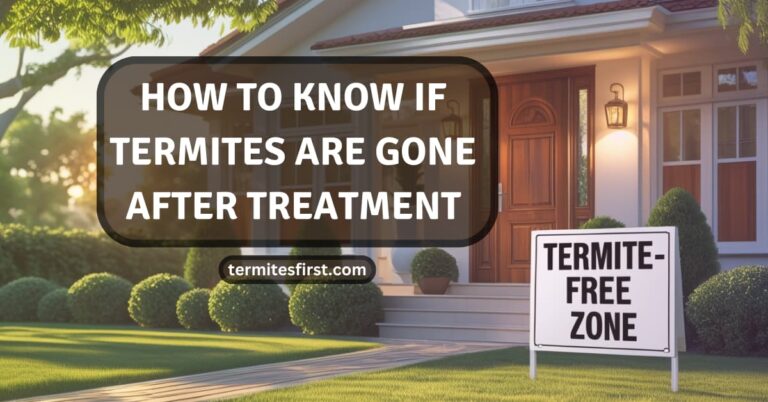How to Get Rid of Termites in Trees: Natural Methods & Effective Treatment
Imagine enjoying a lazy afternoon in your backyard, only to realize that your precious trees are slowly being devoured by pesky invaders – termites. The presence of termites isn’t just a threat to the health of trees; it signifies imminent danger for any wooden structure nearby, including homes or sheds on your property. It’s a covert incursion that frequently remains undetected until serious harm has been done. Are you ready “how to get rid of termites in trees” and to take charge against these ruthless wood-munching enemies? Then buckle up as we delve into an informative guide packed with expert advice on identifying termite infestations and effective methods for their extermination.
Identifying Signs of Termite Activity in Trees
Look for Mud Tubes
Mud tubes on tree trunks are a clear sign of termite activity. These pencil-sized tunnels provide termites with moisture and protection as they travel between the soil and the wood. If you notice these mud tubes, it’s likely that termites have infested the tree. Termite monitoring is crucial to catch these signs early. You may prevent significant harm to your trees by routinely checking them for developing mud tubes.
Check for Hollowed-out or Damaged Wood
Hollowed-out or damaged wood is another indication of termite activity in trees. Termites eat wood from the inside out, hollowing down the inside while leaving behind a thin veneer of wood or merely paint if it’s there on the outside. Use a screwdriver or small hammer to tap the trunks of your trees while you examine them. A hollow sound could indicate internal damage caused by termites.
Presence of Discarded Wings
When abandoned wings are found close to trees, it may indicate the presence of a termite swarm. After mating, male and female reproductive termites shed their wings as they search for new nesting sites – including trees in your yard. If you find discarded wings around your trees, especially after heavy rain when swarms are common, it’s important to take action promptly to prevent further infestation.
Understanding Different Types of Termites in Trees
Subterranean Termites
The most prevalent kind of termites that infest trees are subterranean ones. To reach above-ground food sources, such as trees, these termite species usually construct their colonies underground and construct mud tunnels. They can cause extensive damage to trees by consuming the cellulose present in wood. Signs of subterranean termite infestation in trees may include hollowed-out or damaged wood, the presence of mud tubes on tree trunks, and discarded termite wings near the base of the tree.
These termites are interesting because they attack trees and make mud tubes. Other termites don’t do this. This behavior is important because it can harm forests and cities. The termites make the mud tubes to protect themselves and keep a good environment. Understanding their behavior helps control them.These are unique because they attack trees and build mud tubes. We should learn more about them to protect our trees and buildings.
Drywood Termites
Drywood termites can also attack trees, especially if they are already weakened due to factors such as disease, injury, or old age. In contrast to subterranean termites, can form colonies inside wooden objects like tree trunks without having to come into direct contact with the earth.
When dealing with infestations in trees, it’s essential to inspect for small holes on the surface of the wood where these termite species might be entering or exiting. Piles of fecal pellets near the base of a tree could indicate a termite presence.
Dampwood Termites
Termites that thrive in damp conditions are known to prey on decaying or water-damaged trees. These termite species thrive in areas with high humidity levels and damp wood conditions. When addressing dampwood termite infestations in trees, it is important to assess any underlying moisture issues contributing to tree decay.
Signs that dampwood termites have invaded a tree may include tunnels within the wood grain, frass (fecal matter) buildup around entry points or exit holes on the exterior surfaces of affected trees.
Natural Methods to Get Rid of Termites in Trees
Neem Oil
Neem oil is a powerful natural deterrent against termite infestations in trees. It can be sprayed directly on the impacted regions to make the environment uninviting to termites. The oil disrupts the feeding and reproductive cycles of the termites, effectively reducing their population within the tree. Applying neem oil regularly can help prevent future termite attacks as well.
Neem Oil:
• Acts as a natural deterrent against termites
• Disrupts feeding and reproductive cycles
• Reduces termite population within trees
Beneficial Nematodes
Introducing beneficial nematodes into the soil around infested trees is another effective method for controlling termite populations naturally. These microscopic organisms feed on termites, effectively reducing their numbers in the soil surrounding the tree’s roots. By targeting termites at their source, beneficial nematodes provide long-term protection for trees against these destructive pests.
Beneficial Nematodes:
• Feed on termites in the soil
• Target termites at their source
• Provide long-term protection for trees
Orange Oil
Using orange oil directly on termite galleries within infested trees can significantly aid in eliminating these pests naturally. The active ingredient d-limonene present in orange oil is toxic to termites, causing them to die upon contact with it. When applied correctly, orange oil penetrates deep into wood where it targets and eradicates termite colonies, providing an environmentally friendly solution for treating termite-infested trees.
Using Liquid Termite Treatment; Get rid of Termites in Trees
Injecting Liquid Treatment
Liquid termite treatments can effectively eradicate termites in trees. These treatments are injected directly into the tree trunks, creating a protective barrier against termites. The application process involves injecting the liquid treatment into the infested areas of the tree to target and eliminate the termites. The liquid treatment is carefully administered using specialized equipment or tools designed for injecting substances into trees.
Creating a Protective Barrier
Once injected, the liquid treatment forms a protective barrier within the tree, deterring termites from causing additional harm. This barrier acts as a defense mechanism, safeguarding the tree against future termite infestations and minimizing potential structural damage caused by these pests.
By creating this protective shield within the tree, it not only eliminates existing termite populations but also fortifies it against future invasions. This proactive approach helps to maintain healthy trees while preventing costly damages associated with extensive termite infestations.
Following Careful Instructions
When utilizing liquid termite treatment for trees, it is crucial to adhere strictly to all instructions provided by manufacturers or professionals offering guidance on its application. Following these instructions meticulously ensures that the treatment is applied correctly and at optimal concentrations for maximum effectiveness.
Using specialized equipment like a spray bottle, individuals must exercise caution during application to prevent accidental exposure or spillage of concentrated solutions. Diligently following safety protocols and guidelines guarantees safe handling of liquid treatments while achieving desired outcomes in eliminating termites from trees.
Applying Boric Acid to Get Rid of Termites in Trees
Using Boric Acid as an Insecticide
A potent insecticide that works well to get rid of termites on trees is boric acid. A good way to fight termite infestations is to mix boric acid with water and apply it to the afflicted regions. This method works by directly targeting the digestive system of termites, disrupting their ability to process food and ultimately leading to their demise.
This approach essentially acts as a slow-acting poison for termites. When boric acid comes into contact with the bodies of these pests or when they ingest it, it interferes with their metabolism and digestion, causing them to perish over time. As a result, this provides an effective means of controlling termite populations within trees without relying on harsh chemicals that may harm the surrounding environment.
Applying boric acid to get rid of termites in trees in its liquid form allows for thorough coverage of affected areas on tree trunks and branches where termites are active. Once applied, the solution seeps into crevices and wood pores where termites reside, ensuring comprehensive exposure to these destructive pests.
Safety Considerations When Handling Boric Acid
While boric acid is an efficient tool for combating termite infestations in trees, caution must be exercised when handling this substance due to its potential toxicity if ingested. It’s critical to prepare and apply boric acid solutions according to the safety instructions supplied by the manufacturer.
Make sure you wear the appropriate safety equipment, such as gloves and goggles, when dealing with boric acid during application procedures. Carefully read all instructions on product labels regarding dilution ratios and application methods before use.
Keep in mind that while boric acid is relatively low in toxicity toward humans compared to other chemical pesticides, it should still be stored out of reach from children or pets who might accidentally ingest it.
Dealing with Termite Infestations in Tree Stumps
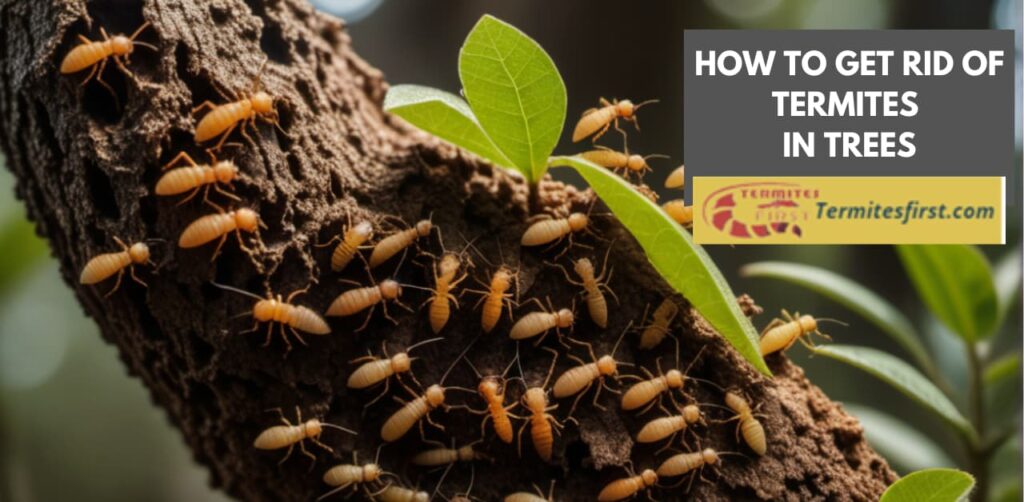
Removing Tree Stumps
Removing the tree stumps from the vicinity is crucial. Termite infestations can be effectively controlled and prevented by removing these possible termite habitats. Termites are attracted to decaying wood, and tree stumps provide an ideal environment for them to thrive. Therefore, by getting rid of tree stumps, you remove a key attractant for termites.
Because it destroys current colonies and lessens the possibility of new ones growing, removing tree stumps also aids in the prevention of re-infestation.
Deprived of their primary food source, termites will have to search for alternative locations to sustain themselves. This significantly lowers the chances of future termite infestations in your yard or garden.
Applying Termiticide Directly
Another effective method to get rid of termites in trees from tree stumps is by applying a specialized termiticide directly onto the stump. This method ensures that any remaining termites within the wood are exterminated while also creating a protective barrier against future infestations.
By using a targeted approach like this, you can directly address the root cause of the problem without impacting other areas unnecessarily. The application process typically involves saturating the stump with an appropriate concentration of termiticide, ensuring thorough coverage to reach all affected areas within the wood.
Regular Inspection and Monitoring To maintain long-term protection against termite infestations in tree stumps, regular inspection and monitoring are essential practices. Periodically checking for signs such as sawdust around or inside tree stumps can help detect early indications of termite activity.
Preventing Future Termite Damage to Trees
Proper Tree Maintenance
Maintaining proper tree health is essential in preventing future termite damage. Regular pruning and watering help keep trees strong and less vulnerable to termites. Pruning removes dead or decaying wood, which are prime targets for termites. Well-watered trees are less likely to suffer stress, making them less attractive to these pests.
Proper maintenance also includes avoiding wood-to-soil contact around trees. This entails making sure that any wooden structures—such as trellises or fences—have space between them and the ground. By doing this, you can reduce the possibility that termites will infiltrate your trees from the ground.
Creating Physical Barriers
Another effective method for preventing termite damage in trees is by creating physical barriers around them. One way to do this is by using gravel or crushed rock as a barrier around the base of the tree. These materials make it difficult for termites to approach the tree, acting as a deterrent against infestations.
Maintaining a clear zone around your trees by removing deadwood can significantly reduce termite attraction. Deadwood provides an ideal environment for termites to thrive near your trees, increasing the risk of infestation and subsequent damage.
By following these preventive measures such as proper maintenance practices like pruning and watering regularly along with creating physical barriers using gravel or crushed rock and eliminating wood-to-soil contact will greatly reduce the risk of future termite damage in your trees.
How to Kill Termites in Trees: 07 Shocking points
When termites invade trees, they can be an annoyance since they can harm the trees and possibly kill them if treatment is not received. The following are some efficient ways to eradicate termites from trees:
Determine which tree is infested:
Search for evidence of termite activity, such as hollowed-out or damaged wood, termite swarms surrounding the tree, or mud tubes on the trunk.
Remove affected branches:
If the termite infestation is localized to certain branches, prune and remove those branches. This can help prevent the spread of termites to other parts of the tree.
Apply termiticides:
Termiticides are chemicals specifically designed to kill termites. Apply the termiticide to the tree’s afflicted regions by mixing it as directed by the manufacturer. When handling termiticides, always be sure to wear protective clothes and take all necessary safety procedures.
Inject insecticides into the tree trunk:
For severe termite infestations, it may be necessary to inject insecticides directly into the tree trunk. This method ensures that the insecticide reaches deep into the tree where the termites are active.
Employ nematodes:
Tiny worms called nematodes actively prey on termites. You may buy these helpful organisms and add them to the soil around the base of the infected tree. Without endangering the tree or other helpful insects, they will infect and destroy the termites.
Solarize the soil:
If termites have spread to the soil around the tree, solarization can help eliminate them. Cover the soil with a clear plastic sheet and leave it in place for several weeks during hot summer months. The heat trapped under the plastic will kill the termites and their eggs.
Seek professional help:
If the termite infestation is extensive or if you are unsure about how to effectively treat it, it is best to consult with a professional pest control company. They possess the skills and knowledge to safely and successfully eliminate termites from trees.
When to Call Professional Pest Control for Termites
Signs of Persistent Infestations
It might be time to think about getting expert assistance if termite infestations in trees continue despite your best efforts. Even after implementing various DIY methods, such as removing infested wood or using natural repellents, the termites might still be causing damage. If you notice ongoing signs of termite activity, like mud tubes on tree trunks or hollow-sounding wood when tapped, it’s a clear indication that the problem is beyond your control.
Sometimes, even if you’ve successfully managed a termite outbreak once before, new colonies can emerge and cause additional damage. This persistence could signal that the infestation has deepened and requires more advanced treatment methods. In such cases, calling in professional pest control becomes essential to effectively address the issue.
Benefits of Professional Assistance
Professionals have access to specialized equipment and treatments designed specifically for effective termite control in trees. They possess a deeper understanding of termite behavior and biology which allows them to identify the extent of an infestation accurately. Their expertise enables them to develop targeted strategies tailored to each unique situation.
Moreover, timely intervention by experts can prevent further damage and protect your trees from irreversible harm caused by termites. Professionals are equipped with knowledge about environmentally friendly solutions that ensure safety for both your trees and surrounding ecosystem while eradicating termites effectively.
Conclusion: Ensuring the Health of Your Trees
You’ve learned about the sneaky ways termites can wreak havoc on your trees and the various methods to combat these pesky invaders. From natural remedies like boric acid to professional pest control, you now have a toolbox of strategies to protect your leafy companions. Remember, prevention is key! Regular inspections and proactive measures will safeguard your trees from termite trouble. So, roll up your sleeves, put on your termite detective hat, and show those critters who’s boss!
Protecting your trees from termites is a crucial part of maintaining a thriving outdoor space. By taking action now, you can ensure that your trees stand tall and healthy for years to come. Don’t let those tiny terrors call the shots – it’s time to take back control of your arboreal domain! Get out there and give your trees the termite-free future they deserve.
FAQ’s:-
Look for mud tubes on the tree trunk, hollow or damaged wood, and discarded termite wings near the tree. Also, pay attention to any sagging or discolored areas on the tree’s surface.
You can use beneficial nematodes, orange oil, or neem oil as natural remedies to eliminate termites from trees. These options are eco-friendly and pose minimal risk to other organisms.
If you notice extensive damage or multiple termite colonies infesting your trees, it’s best to seek help from a professional pest control service. They have the expertise and tools to effectively address severe infestations.
Regularly inspect your trees for signs of termite activity and maintain proper drainage around them. Consider using treated wood when planting new trees and avoid stacking firewood next to living ones.
Ensuring the health of your trees post-termite treatment is crucial for their long-term survival and resilience against future threats. Pests and diseases face stronger resistance from healthy trees.
